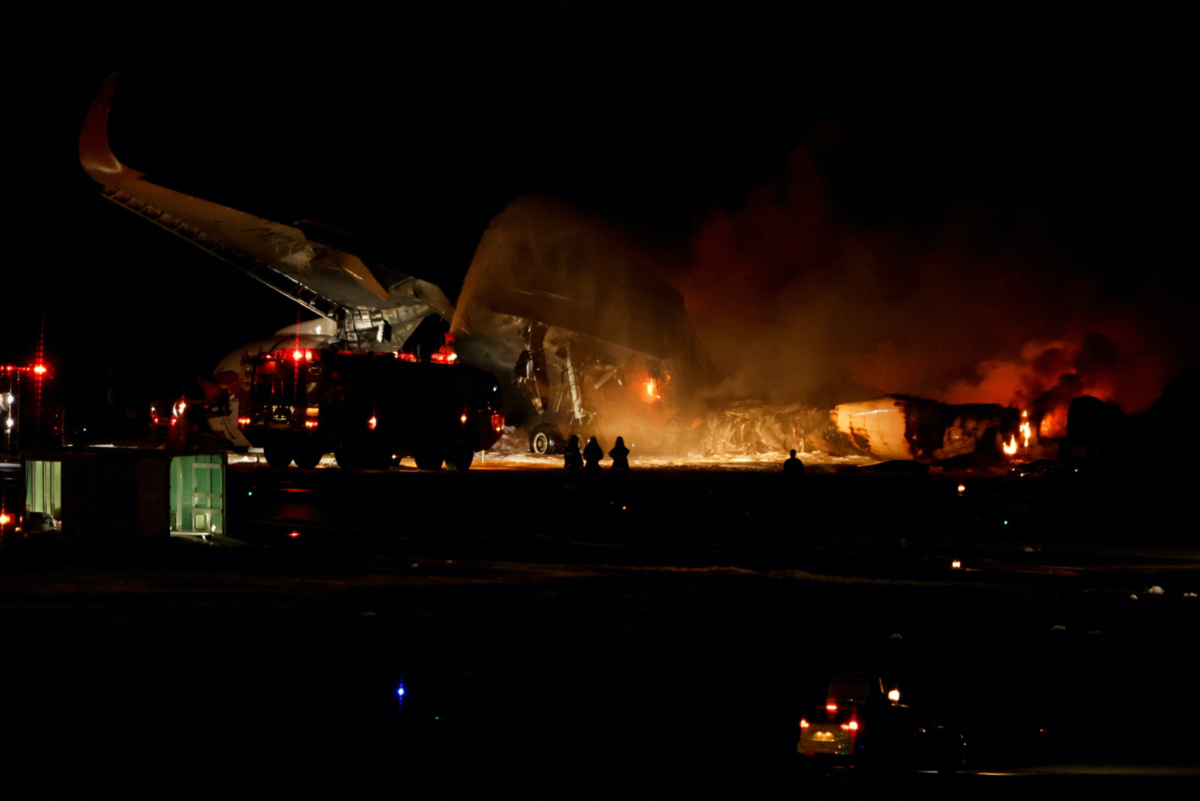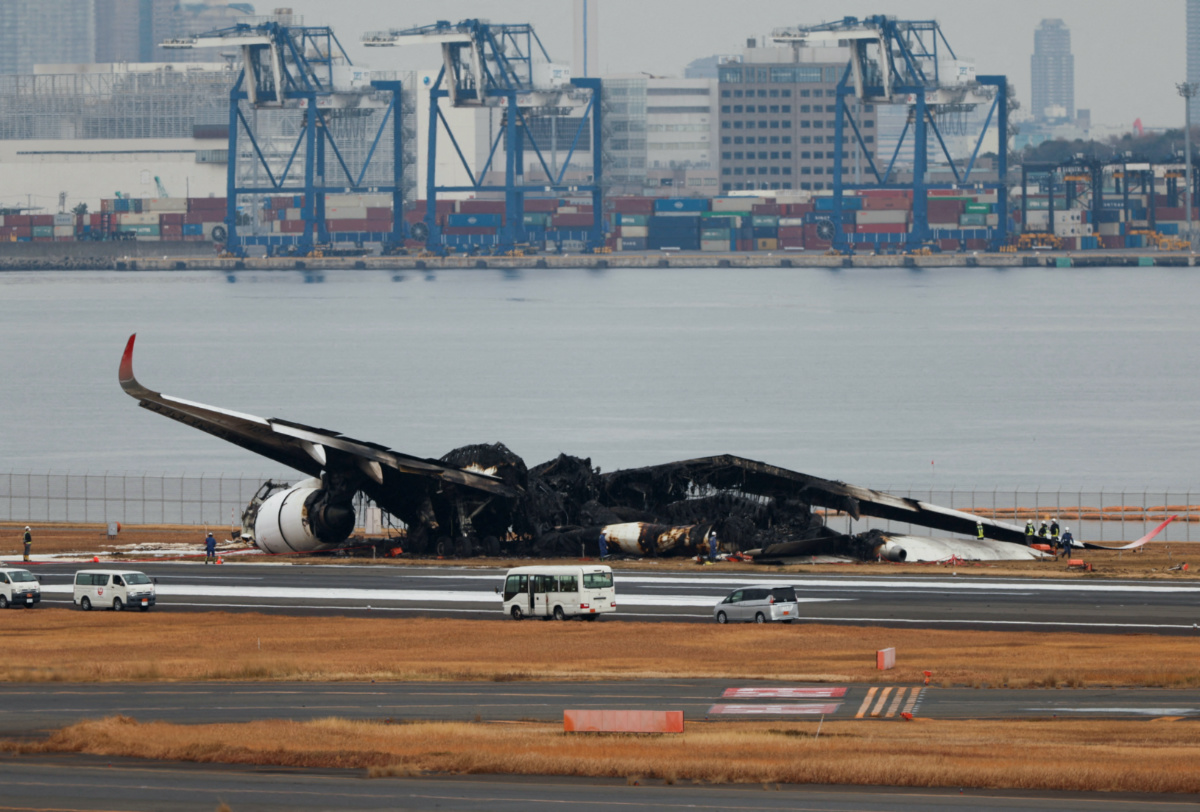Tokyo, Japan
Reuters
From the moment a Japan Airlines passenger jet collided with a smaller plane on a runway in Tokyo on Tuesday, it took crew 18 minutes to get all 367 travellers off the plane and safely accounted for.
Reconstructing the scene based on crew accounts, officials at Japan’s second-biggest airline on Wednesday said crew followed emergency procedures in textbook fashion, starting with the first rule: panic control.

Firefighters work on a burning Japan Airlines’ A350 airplane at Haneda International Airport, in Tokyo, Japan, on 2nd January, 2024. PICTURE: Reuters/Issei Kato/ File photo
As soon as the Airbus A350 wide-body jet came to a stop, cabin attendants called out to passengers to remain calm as bright-orange flames engulfed large areas of the plane and smoke quickly filled the cabin.
The crew quickly sized up the situation with visual checks of the exterior and decided which of the eight emergency exits were safe for use. They then used short, direct commands, as they are trained to do, such as “leave your luggage” and “not this door”, officials said.
Some passengers interviewed at the airport late on Tuesday credited the swift evacuation drill with saving their lives.
“I heard an explosion about 10 minutes after everyone and I got off the plane,” said 28-year-old Tsubasa Sawada. “I can only say it was a miracle, we could have died if we were late.”
Evacuation chutes
Emergency protocol stipulates that crew must have permission from the cockpit to open any emergency exits. The captain stood near the two exits up front and gave the go-ahead for evacuation.
But the third safe exit in the rear could not be cleared because the public announcement and intercom systems were no longer functioning. The cabin crew then made the correct decision to open the door anyway, allowing passengers to slide down the evacuation chutes, JAL said.
All cabin attendants get trained once a year on evacuation procedures, simulating various scenarios such as what to do when they cannot communicate with the cockpit, officials said.
After ensuring that all passengers had slid safely down the three slides, the crew and pilots completed the evacuation at 6:05pm, or 18 minutes after landing.
JAL officials did not know how long the process took from the time the aircraft came to a complete stop.

Officials investigate a burnt Japan Airlines Airbus A350 plane after a collision with a Japan Coast Guard aircraft at Haneda International Airport in Tokyo, Japan on 3rd January, 2024. PICTURE: Reuters/Issei Kato
90 seconds
The crash is the first significant accident involving the Airbus A350, Europe’s premier long-haul jet, in service since 2015. It is also the first time a passenger plane built mainly from lightweight carbon composites has burned totally.
The A350-900 was certified for a full load of up to 440 passengers to be evacuated within 90 seconds with only half of the exits usable.
We rely on our readers to fund Sight's work - become a financial supporter today!
For more information, head to our Subscriber's page.
It was not immediately clear what portion of the 18-minute operation was spent physically getting passengers down slides, but safety experts said interviews with passengers would be examined worldwide to help shape future evacuation procedures.
“The JAL cabin crew should be highly commended for their textbook evacuation,” an Airbus spokesperson said.
JAL officials said the crew on flight 516, from near the northern Japanese city of Sapporo to Tokyo’s Haneda airport, had followed appropriate procedures, but also praised the passengers for the orderly exit from a full flight that included eight pre-school children.
Aviation safety agencies have warned for years that pausing to collect carry-on baggage risks lives during an evacuation.
“I’m sure all of you have the experience of being asked on flights not to take your carry-on items in the case of an emergency evacuation,” Noriyuki Aoki, senior vice president of general affairs, said at a briefing for reporters.
“This was followed to the tee, including with the cooperation of the passengers, and we believe that led to the swift evacuation.”
– Additional reporting by DANIEL LEUSSINK and SATOSHI SUGIYAMA in Tokyo, Japan; and, TIM HEPHER in Paris, France.






